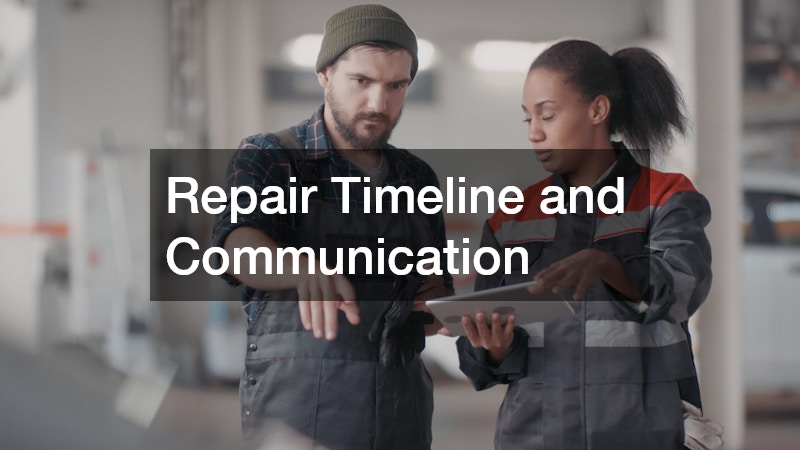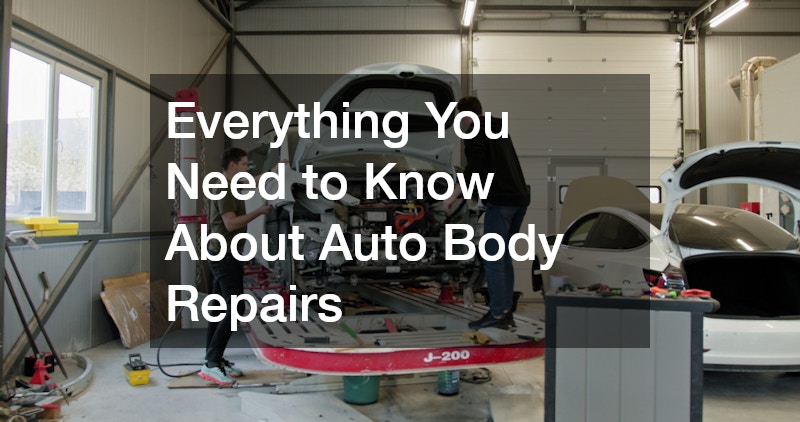
Auto body repairs are a crucial aspect of vehicle maintenance that ensures not only the aesthetic appeal of a car but also its structural safety. Whether caused by minor accidents, wear and tear, or severe collisions, the need for auto body repairs can arise unexpectedly, making it essential for car owners to be informed. This article will guide readers through common types of repairs, choosing a reliable repair shop, and what to expect during the repair process, providing a comprehensive understanding of the auto body repair landscape.
Readers can expect to gain insights into various aspects of auto body repairs, from simple touch-ups to complex collision restorations. The following sections will elaborate on common repair types, what to look for in a repair shop, and the steps involved in the repair journey. By the end, car owners will be better prepared to handle the sometimes daunting task of getting their vehicles back to prime condition.
Dent and Scratch Repairs
Dents and scratches are among the most frequent issues car owners encounter, primarily due to minor accidents or parking lot mishaps. Paintless dent repair (PDR) is a popular technique employed by repair shops to address minor dents without affecting the existing paint. Traditional methods may involve sanding, filling, and repainting, which while more invasive, are sometimes necessary for deeper or more complex damage.
Paintless dent repair is cost-effective and usually quicker, appealing to those with time constraints. However, not all dents are suitable for PDR, making it essential to consult a professional to assess the damage accurately. This initial evaluation helps determine the most appropriate repair approach, ensuring optimal results while preserving the car’s value.
Collision Repairs
Collision repairs address more severe damage resulting from accidents, involving components like the vehicle’s frame, bumpers, and panels. Processes such as frame alignment are critical in ensuring the vehicle’s structural integrity remains intact, directly influencing safety and performance. Bumper repair and panel replacement might also be necessary to restore the vehicle’s appearance and functionality.
Frame alignment uses advanced technology to return the vehicle’s structure to its pre-collision state. Misaligned frames can lead to uneven tire wear and compromised safety, highlighting the importance of precision in collision repairs. Expert technicians leverage frame straightening equipment to correct any discrepancies, ensuring the car drives correctly.
Paint Repairs
Paint repairs are vital for both aesthetic reasons and to protect the car’s metal surfaces from corrosion. Techniques like color matching and respraying are common, requiring a keen eye for detail to ensure the repaired area seamlessly blends with the existing paint. Effective paint repair involves addressing both minor blemishes and significant paint damage from scratches or chips.
High-quality paint repairs necessitate the use of OEM (Original Equipment Manufacturer) paint, which guarantees consistency with the car’s factory finish. Professional technicians must mix and apply the paint precisely, often requiring a controlled environment to avoid flaws such as dirt or bubbles. The expertise involved ensures that the vehicle’s aesthetic appeal is restored without any visible signs of repair.
Credentials and Certifications
Selecting a reliable auto body repair shop often begins with evaluating the shop’s credentials and certifications. Certifications from organizations like I-CAR (Inter-Industry Conference on Auto Collision Repair) and ASE (Automotive Service Excellence) indicate a commitment to industry standards and continuous education. These designations reassure customers of a technician’s proficiency and the shop’s dedication to quality.
Certified shops are more likely to employ technicians who are knowledgeable about the latest repair techniques and technology. This expertise ensures that the repairs are not only precise but also meet or exceed safety requirements. By verifying these credentials, car owners can be more confident in the level of service provided.
Reputation and Reviews
A repair shop’s reputation speaks volumes about its service quality and customer satisfaction. Reading online reviews, checking ratings on platforms like Google and Yelp, and seeking recommendations from friends or family are effective methods for evaluating reputation. The Better Business Bureau is also a valuable resource for vetting customer complaints and dispute resolutions.
Word-of-mouth remains a powerful tool in assessing a repair shop’s reliability, often highlighting personal experiences with the shop’s customer service and repair outcomes. It is crucial to consider both positive and negative feedback to gain a balanced perspective on a shop’s performance. Vetting a shop’s reputation before committing can save time, money, and frustration.
Repair Timeline and Communication
Understanding the typical repair timeline can help manage expectations and arrange personal commitments accordingly. Repair duration is influenced by factors such as damage extent, parts availability, and insurance processing times. Although repair shops aim to minimize downtime, unforeseen issues can extend the timeline, necessitating clear communication throughout.
In conclusion, understanding auto body repairs is essential for vehicle owners to maintain their cars’ safety and aesthetic value. From minor dents and scratches to significant collision repairs, being informed empowers owners to make effective decisions regarding repair options and service providers. The process of evaluating repair shops, understanding the initial inspection, managing insurance claims, and being aware of the repair timeline is crucial for a seamless experience.
With this comprehensive guide, readers are now equipped with the knowledge needed to approach auto body repairs knowledgeably and proactively. By remaining informed and engaged throughout the repair process, car owners can ensure their vehicles remain in peak condition while minimizing potential inconveniences. This awareness ultimately contributes to longer vehicle life, enhanced safety, and sustained visual appeal.

